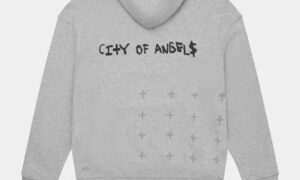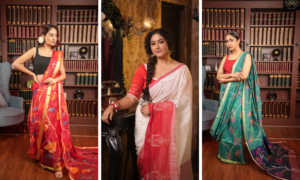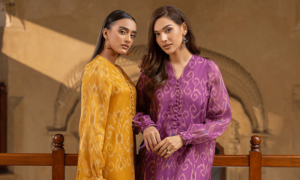
Denim is one of the most respected fabrics in the world. When you say “denim jeans,” everyone around you knows what you are talking about. Denim is in demand across national and cultural boundaries, and denim jeans have become a symbol of American culture worldwide. Did you know that it was once used as a sail? The word denim is derived from the French word serge de Nimes and refers to the city of Nimes; De Nimes means ‘Nimes.’ We have adopted denim in a way that was not available in our daily lives. Denim is made from cotton fibers. It is a tough, strong, twill woven, 100% cotton fabric.
The unique feature of denim is that the fabric appears diagonal ribbing on the face, which distinguishes it from other cotton fabrics. It is the exceptional twill weaver that creates this diagonal pattern. The fibers are knitted in a twill weave pattern on the loom. You are wondering why your jeans are white on the inside and blue on the outside? When clothing manufacturers knit denim, the warp thread is dyed to Indigo, while the soft yarn is not dyed. This distinctive weave, in which the colored lines (mostly Indigo) intersect with white threads, results in a beautiful two-tone look. The colored fabric sits on the face and pulls towards the white back.
Different types of denim:
Over the years, some variations of denim have been developed. Below is information about some of the most popular options:
- Raw denim:
This type of denim has not been washed or treated. Typically, it is worn on the wearer’s body for six months to a year without washing. Raw denim enthusiasts often keep their jeans free from germs and bacteria overnight by keeping them in the freezer.
- Sanforized denim:
Many types of denim have been sanforized, which is because of the washing process that results from modern denim fabric. Sanforized jeans are soft, are also less durable, and are not as personalized as raw denim jeans.
- Poly denim:
The term “poly denim” is widely used to refer to denim products made from a blend of cotton, polyester, and other synthetic fibers. In addition to polyester, materials such as lyocell and nylon are sometimes combined with cotton to make denim products. Some purists say that poly denim is not “real” denim. It is soft and popular on-demand.
- Acid wash denim:
For making acid wash denim, pumice stone soaked in chlorine is used to clean the fabric. It can also be made from chemical acids added to the wash. The scrubbed color fades and creates a flawless, washed, and worn look. This look became popular in the 1980s and has been recycled many times. This type of denim has an iconic speckled look. It is produced by washing raw denim in solid acid.
- Stonewash denim:
Pumice stone is washed with stone to remove color, and abrasion is used to give the fabric a vibrant look. Stonewash is a little harder to control and has uneven friction. Things made with this type of denim will not last long.
- Crushed denim:
Crushed denim looks wrinkled or crumpled. It is usually used in a mixture with other procedures such as acid or stone wash to give a truly worn look. These wrinkles do not come out in the wash.
- Bull denim:
Bull denim is rigid, sturdy denim made from 100% cotton. It is used for clothing along with upholstery and curtains and comes in a variety of weights. If dyed uniformly in different shades, it will be smooth on one side and have a noticeable weave.
- Organic denim:
Chemicals are not utilized in the growth or manufacture of cotton in organic denim. Like all organic things, it is considered a healthy alternative to regular denim. Due to its recent popularity, clients can include organic denim styles into their tech packs.
- Selvage denim (Selvage or edge denim):
Selvage denim has a color along the edges that prevents the edges from falling off. In general, when Selvage is used in the seams of jeans, they are considered to be of good quality. Selvage is usually orange or red but can be any color, depending on the manufacturer. An alternative to using Selvage on jeans is to use raw edges and overlock to prevent frying.
- Indigo dyed denim:
This is common in denim varieties. While the warp yarn is dyed in Indigo dyed denim, the weft thread remains white. This gives the denim a distinctive blue look and the lighter look you see inside the denim dress. Indigo is the name of the blue color that initially came from the Indigo plant. The synthetic version of the blue color is used today, but it still has the name Indigo.
These are a few types of denim that are popular and are used daily. Plenty of cut and sew manufacturers opt to work with denim as it is versatile.





